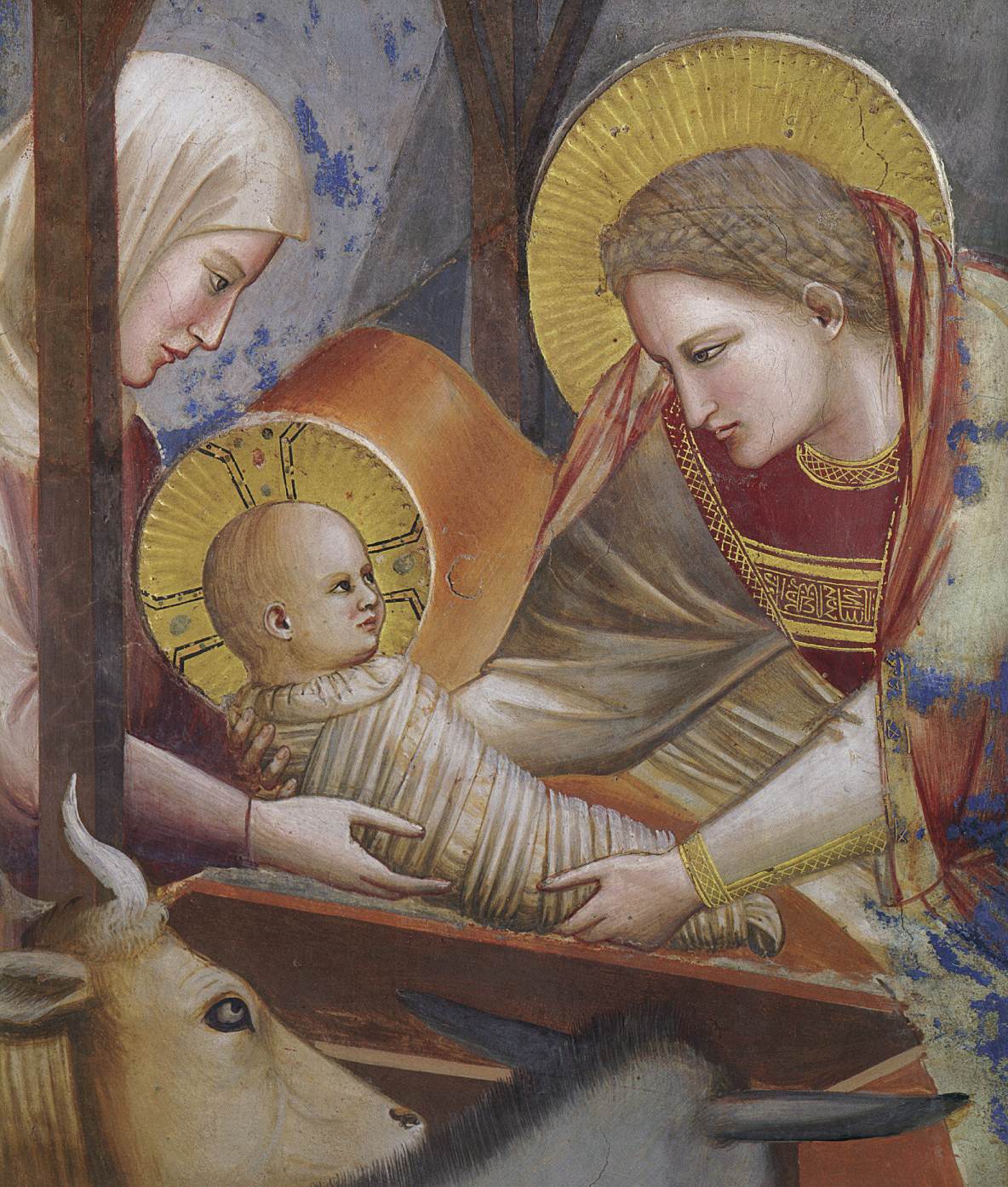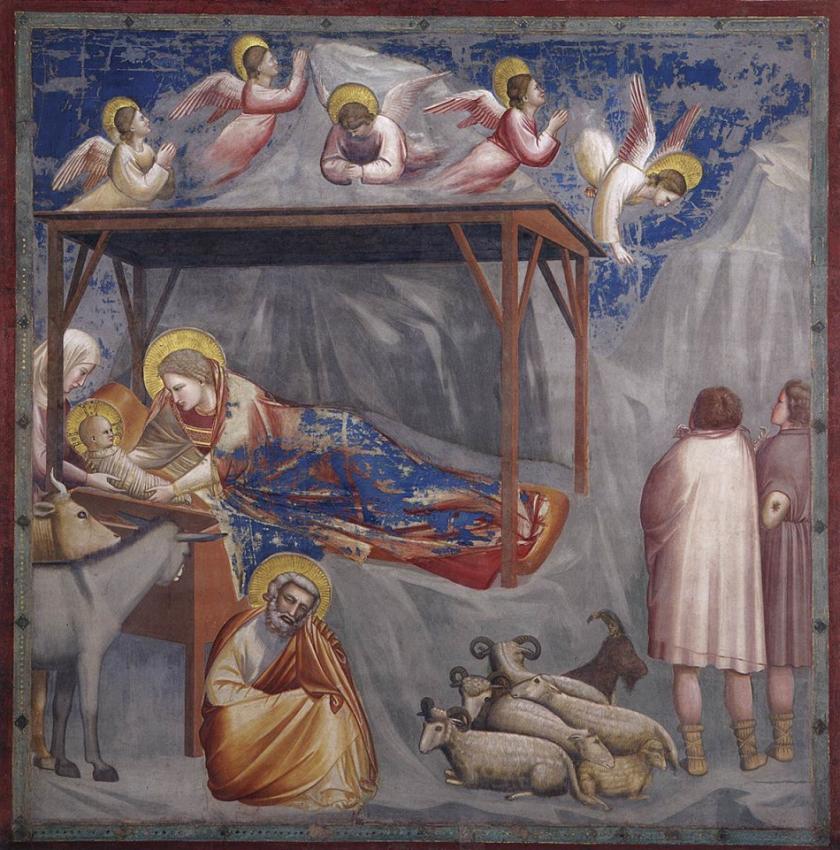Some time in the late 1280s, the artist Cimabue was wandering in the Tuscan countryside when he chanced upon a boy shepherd. According to Vasari, whose Lives of the Artists is the source for most such stories, the boy was “portraying a sheep from nature on a flat and polished slab, with the stone slightly pointed, without having learnt any method of doing this from others, but only from nature.” The young untrained artist was Giotto, who would be taken to Florence as Cimabue's apprentice and soon outstrip his master.
Posterity has been deprived of the sheep scratched in stone. But Giotto would paint some more sheep in his version of the Nativity. The Scrovegni Chapel in Padua was consecrated in 1305 when the artist was not yet 30. There is no finer fresco cycle by Giotto, or by pretty much anyone else anywhere, although in fact the chapel houses two, showing the lives of the Virgin and of Christ, with a Last Judgement filling the entrance wall.
 Giotto placed the Nativity in a shed rather than the traditional Byzantine locale of a cave. It’s a distinction that excites art historians but for everyone else what takes the breath away is the humanity, the overpowering sense of real life and the real world injected for the first time into religious iconography. A mother never took possession of her newborn with greater tenderness than Mary of her swaddled child. Her attendant handles the impassive boy with loving care. In the foreground a beady ox and a ravenous ass dig their snouts into the manger while a sleeping Joseph crouches on the ground next to an adorable little flock of half a dozen sheep. Over the roof angels crowd the sky in mobile attitudes of devotion, the central one looking down at an angle that is intensely Giottesque, while to the side two robed shepherds in cross-gartered boots turn away from the viewer to gaze in wonder. Italian painting had never seen such an eloquent back before: on a flat plane Giotto had the power to make his figures move.
Giotto placed the Nativity in a shed rather than the traditional Byzantine locale of a cave. It’s a distinction that excites art historians but for everyone else what takes the breath away is the humanity, the overpowering sense of real life and the real world injected for the first time into religious iconography. A mother never took possession of her newborn with greater tenderness than Mary of her swaddled child. Her attendant handles the impassive boy with loving care. In the foreground a beady ox and a ravenous ass dig their snouts into the manger while a sleeping Joseph crouches on the ground next to an adorable little flock of half a dozen sheep. Over the roof angels crowd the sky in mobile attitudes of devotion, the central one looking down at an angle that is intensely Giottesque, while to the side two robed shepherds in cross-gartered boots turn away from the viewer to gaze in wonder. Italian painting had never seen such an eloquent back before: on a flat plane Giotto had the power to make his figures move.
“He deserves to be called the pupil of nature and no other,” concluded Vasari, who never made it to Padua. Is it too fanciful to imagine that one of those shepherds is, if not a likeness, then a projection of Giotto himself?










![SEX MONEY RACE RELIGION [2016] by Gilbert and George. Installation shot of Gilbert & George 21ST CENTURY PICTURES Hayward Gallery](/sites/default/files/styles/thumbnail_125_x_125_/public/mastimages/Gilbert%20%26%20George_%2021ST%20CENTURY%20PICTURES.%20SEX%20MONEY%20RACE%20RELIGION%20%5B2016%5D.%20Photo_%20Mark%20Blower.%20Courtesy%20of%20the%20Gilbert%20%26%20George%20and%20the%20Hayward%20Gallery._0.jpg?itok=3oW-Y84i)




Add comment